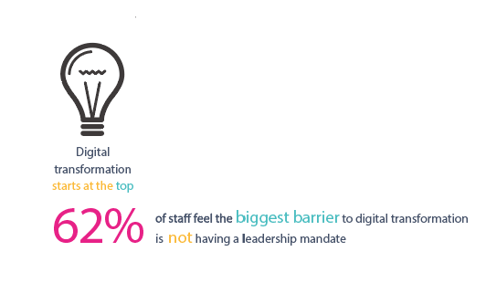Construction and engineering sectors are well-known as being one of the world’s least digitised sectors.
The difficulties are understandable since typical construction projects involve numerous independent subcontractors and suppliers with little incentive to embrace new methods. Projects also vary greatly, so it is often difficult to make them repeatable. Limited budgets and the remote nature of some construction projects result in many construction and engineering firms failing to invest in technology.
However, we are seeing a change in this sector and despite the economic downturn, according to a global research study from IFS, there has been an increase in digital and technology investment with 52% of companies stating they will increase their spending on digital transformation.
Digital transformation plans are not consistent across all geographies or industry verticals. The survey places construction as the most willing to increase digital transformation spend, with 75% of respondents in this sector saying they have plans to invest this year.
So, what has changed?
You may have seen on LinkedIn the post about “Who led the digital transformation of your company?
Option C is boldly circled in red and there is no doubt that the impact of the pandemic on digital transformation recorded a near universal change. Satya Nadella, CEO of Microsoft, recently said that he has seen “two years’ worth of digital transformation in two months”.
In addition, construction projects are increasing in both complexity and scale, and it is therefore important to deliver assets which reduce cost and enhance performance; both of which will require the sector to adopt new ways of thinking and working.

Based on our experience, we have identified five key success factors to enable a long lasting change.
Change must first take place within
Many organisations have learned the hard way that digital transformation is not just about the technology - it is about the people. More specifically, change and transformation must first take place within. The leadership team should lead from the front by demonstrating the importance of the transformation and ensure that the means for success are provided.
Provide the right resources
Once a transformational leader succeeds at creating a culture of change, the next step is to train or hire the right digital-savvy talent to execute the strategy. The digital project requires a strong framework with working groups and regular reporting to track progress and ensure efficiency.
Align to objectives
Focus on fixing pain points and achieving objectives. A common scenario is that too much focus is placed on technology and therefore the solution fails to deliver visible benefits. Training effort is also a priority.
Communicate frequently
Clear communication is critical from the beginning. More specifically, communicate the vision, explain the journey, and remember to celebrate success along the way. The digital transformation should be launched prominently and with clear communication.
Empower people
Beyond processes, transparency and feedback loops, people are more likely to adopt new technology especially if they are involved and can see how it helps them to achieve their goals and objectives. User-centered design therefore focuses on what users need as well as balances this with business requirements as well as technology capability. Construction and engineering companies should devote special attention to collaboration and design digital use cases that smooth the interaction among multiple groups and disciplines.
In summary, there are numerous exciting opportunities for the construction and engineering sectors to develop further with digitally enabled working offering the potential to diversify, innovate and develop new services.
The world around us may not be certain, but what is certain is that construction and engineering sectors are only going in one direction, and that is digital.
References:
Laing O'Rourke's digital journeyLaing O'Rourke is the largest privately-owned construction company in the UK. LOR employs nearly 13,000 staff globally in Europe, Australia, New Zealand, The Middle East, Hong Kong, and South East Asia. |
|
Subscribe to our newsletter
This site is protected by reCAPTCHA and the Google Privacy Policy and Terms of Service apply.